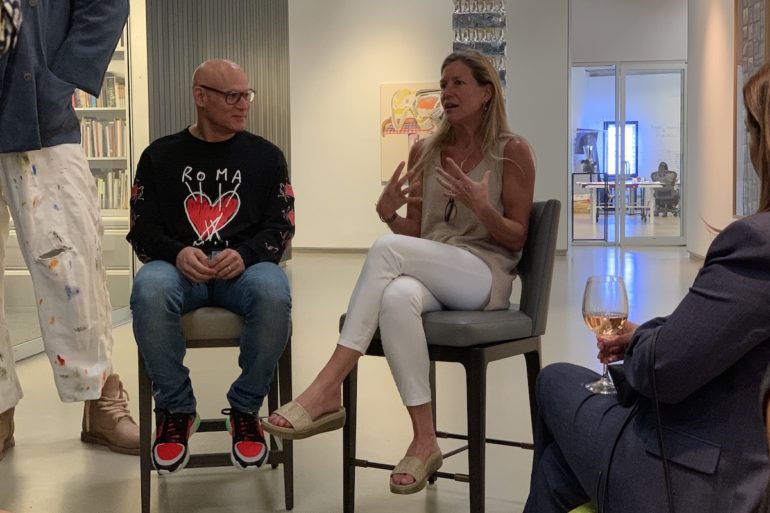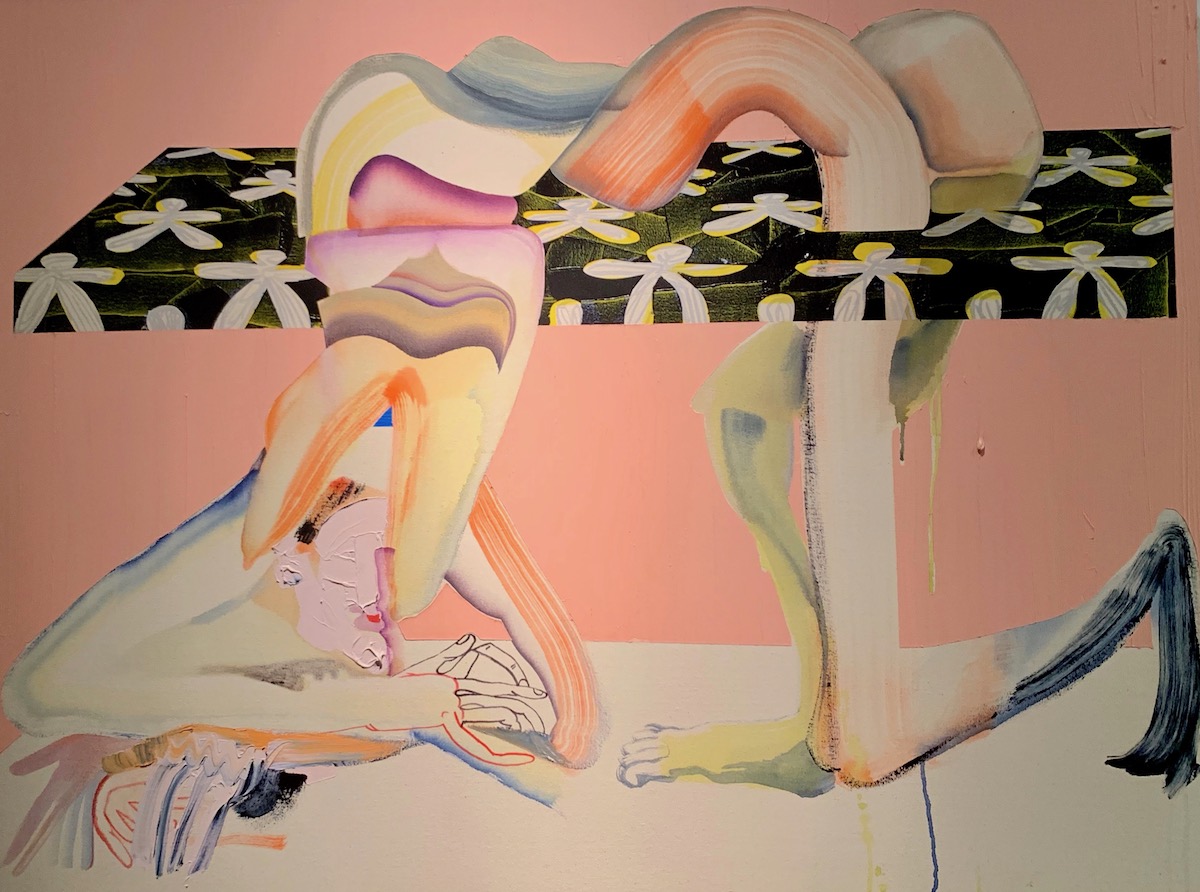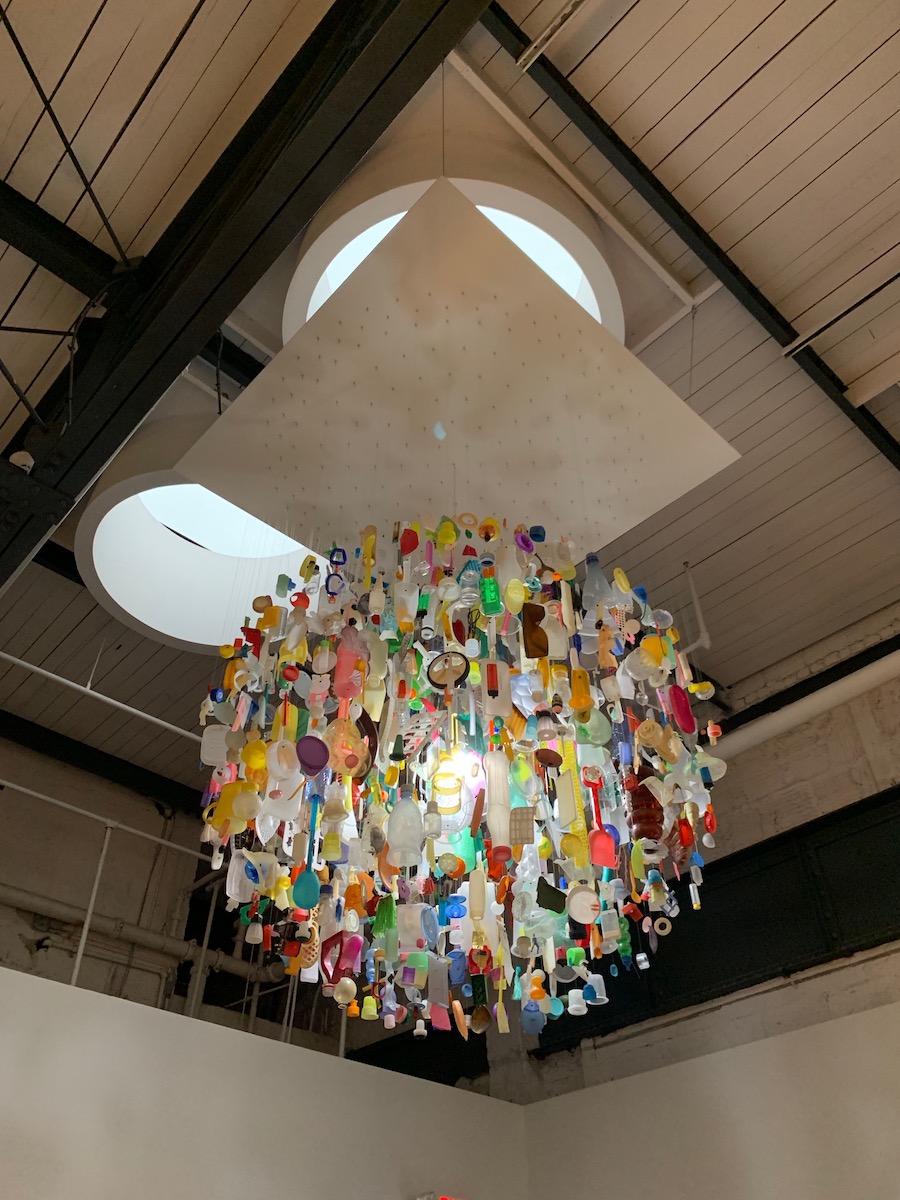
This post is also available in:

Among the artistic-cultural programs organized by Fountainhead, there are events that aim at exploring and consolidating some of the most exclusive artistic realities of the city, not only from the point of view of those who produce it, but also from the perspective of those who collect, view, and promote it. Kathryn Mikesell organized for the Visionary Member of the Fountainhead, an interesting conversation with Craig Robins, in the venue of Craig Robins’ Collection, staged at the Dacra studios in the Design District, 3841 NE 2nd Ave.
Craig Robins beside being a fervid sustainer of the Fountainhead of the impact the it has on art and on Miami, is also a loved person in the art sector due to the effort he puts into helping artists not yet known, rooting for them and helping their professional careers. His collection in fact includes pieces by Christina Quarles and Tschabalala Self, both alumni of the Fountainhead Residency, graduated in 2017 and 2014 and both find themselves in the artistic panorama worldwide.

Architect, urban developer, entrepreneur and philanthropist born in Miami beach in 1962, the visionary Craig Robins is leaving an indelible mark In the landscape of his birthplace, with his visionary urban variations, that combine artistic elements of site-specific installations and architecture. To him we owe the requalification of some areas of Miami and Miami Beach, on which he states: “Back in the days talking about Miami meant exclusively Miami Beach, a city with its own architectural identity made of Art-Deco buildings that were unfortunately left abandoned due to the crack epidemic spread and high rate of criminal activity. No one ever considered the possibility of restoring some urban areas beyond the Miami bridge”.

His effort in the urban branch has a strong social component which comes from investing equally in culture and business. It started in 1987 with his conservative intervention on important Miami Beach areas (Española Way, Washington Avenue and in a second place Lincoln Road, all the way to AQUA, the residential complex on Allison Isle in 2008) along with another important visionary that left a mark in the Wynwood district: Tony Goldman. In fact, to Miami the image of Craig Robins is to the Miami District just as much as that of Tony Goldman is to Wynwood: both of them were able to make poor areas reemerge and become areas of social and artistic-cultural interest known worldwide. It’s a big feeling of recognition that brings Robins to define Goldman as his second extraordinary mentor, the first being his dad, who was a urban entrepreneur and Robin’s sustainer too. It’s funny to now that while in the Miami landscape actors, singers and models were wondering around looking for intriguing corners of the city, one of the first tenants to live in one of his buildings was no less than Keith Haring, one of the main characters of the Street Art and Pop Art world.

Irony of the sort or simple natural evolution of his visionary instincts (mixed with some luck, says Robins), Craig Robins’ artistic approach started at the time of his architectural studies in a University in Barcellona.
The city of Mirò, loved by Salvador Dalí and Picasso, but most importantly the city of Antoni Gaudi, that with his masterpiece par excellence, the unfinished Sagrada Familia (born from the idea of sand castles made by kids on the beach) was of great inspiration for Craig Robins, both for his concept of city, gathered along the piazzas where the social life nucleus was, and for the development of Modern Art, born through images of the greatest Spanish painted of the late 1700s early 1800s, Francisco Goya, exhibited at the Prado Museum.
An electrocution that of Goya, that pushed Robins to buy the artist’s originals, today exhibited at the Dacra space and also to commission an emblematic piece to the artist John Baldessari (known in Miami for the façade of the View City Garage) as a synthesis of his passions and his artistic interests (Real Shadows).

Craig Robins was raising observing artists as they painted within the walls of his home, guests of his mom. And is the Design District was born from the will of creating a central pole around which to unite architecture, art and culture as far as good food and luxurious shopping are concerned. The site-specific installations and the architecture that take shape in the district, are nothing more than an extension of Craig Robins’ artistic collection, as John Baldessari or Urs Fisher demonstrated( this last one with a piece exhibited in Paradise Plaza). The pieces inside the collection, made of two thousand pieces and exhibited on a rotational schedule (two hundred of which were donated at the Perez Art Museum of Miami, of which he is trustee), go from paintings to sculptures and installation, incorporating important pieces of design that harmoniously coexist in the Dacra offices, offering the visitor a new approach to art completely different from that shown in traditional collections: big sculptures are exhibited in the reception area, upon which hovers the amazing chandelier The Tide, a meter wide, created by the English Stuart Haygarth and made of plastic litter picked up on the beach. The piece is number 10, on a production of 10 pieces.
After all, his collection (which can be visited for free upon reservation), just like the Design District is an environment in which moments of culture are combined with moments of work and moments of relaxation: an environment that is able to bring together people with different interests and still satisfy the expectations of the visitor and the curiosity of enthusiasts with temporary exhibitions present at every corner of the streets.

Listening to Craig Robins talking, sitting on the original benches created by Morris Lapidus and Jean Prouvé, or on the multicolored Clay chairs hand-made by Maarten Baas, it is interesting to formalize syllogisms between architecture, art and design while right next to Craig Robins and Kathryn Mikesell, the ephemeral art of Standing Julian wax sculpture (Second Life Material) by Urs Fisher, is consumed in the air.
Among the merits acknowledged to Craig Robins is also that of having contributed to bringing the winter edition of Art Basel/Miami Beach to Miami and having founded another important exhibition: Design Miami. Two of the most important art and design fairs in the world that have earned Miami the title of one of the most influential artistic and cultural cities in America. Another big step for the city, once appreciated exclusively for seaside tourism.
The evening ended with Tiffany Chestler (Director of Craig Robins Collection cultural programming) who led us along the corridors of Dacra, where the great aluminum sculpture by Pawel Althamer, is located, along with several works by John Baldessari (Robins has owned 33, at the suggestion of his friend, gallery owner Jack Tilton), Marlene Dumas and Nicole Eisenmann, among others. An itinerant walk along the artistic symbolism of the visionary Craig Robins: between work and post-modernist culture.
.
